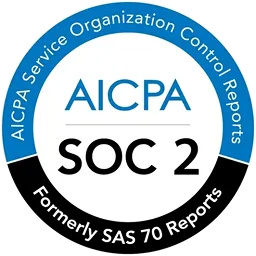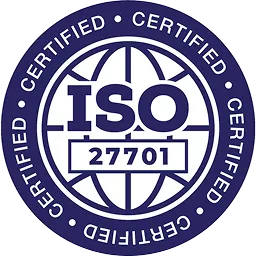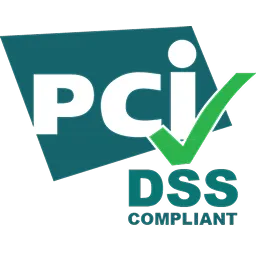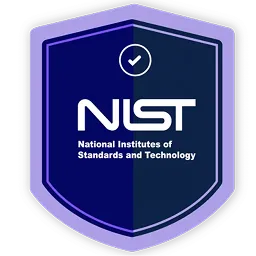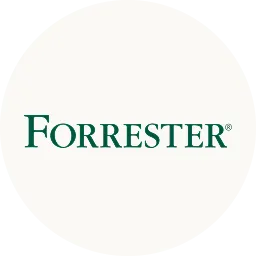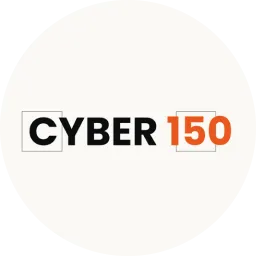With the rapid growth of online operations and the vast amounts of sensitive information stored, the need for robust security measures is more critical than ever.
This necessity has led to the rise of Fine Grained Authorization (FGA). FGA offers precise control over who can access specific information within a system or application.
Fine Grained Authorization (FGA) addresses the escalating complexity of data security by offering precise control over who can access specific information. Without FGA, the risk of unauthorized access to sensitive data skyrockets, exposing businesses to severe consequences such as data breaches and loss.
By granting users only the necessary access privileges to fulfill their roles, FGA minimizes the likelihood of security breaches and strengthens data protection efforts. Let’s delve into what fine grained authorization is.
What is Fine Grained Authorization?
Fine grained authorization represents a sophisticated approach to data access control, enabling users to define and enforce access policies with exceptional precision. Unlike traditional access control mechanisms, FGA empowers organizations to establish highly granular rules tailored to their unique needs.
By incorporating contextual factors such as location, time, and user identity, FGA offers unparalleled flexibility in regulating data access.
The key advantages of FGA lie in its capacity to address specific business requirements and its adaptability to evolving needs. This flexibility enables users to adjust their access controls, ensuring robust security measures while facilitating seamless operations.
Fine grained authorization is essential for various entities, particularly:
- Regulated Industries: Organizations operating in highly regulated sectors such as banking, healthcare, and government require FGA to comply with industry-specific regulations. These regulations often mandate strict control over access to sensitive data to protect confidentiality, integrity, and privacy.
- Companies Handling Sensitive Data: FGA can benefit any organization that deals with vast amounts of sensitive data, regardless of industry. This includes financial institutions, healthcare providers, insurance companies, and technology firms that store or process sensitive information such as personal identifiable information (PII), financial records, or proprietary data.
- Government Agencies: Government entities, at various levels, handle a significant volume of sensitive data related to national security, law enforcement, taxation, and citizen services. FGA is critical for these agencies to ensure that only authorized personnel can access classified or sensitive information.
- Companies Employing Third-Party Vendors: Many organizations engage third-party vendors or contractors to perform specific tasks or provide services. These vendors may require access to the organization's sensitive data to fulfill their obligations. FGA allows companies to grant selective access to vendors, limiting their permissions to only the necessary data or systems. This thereby reduces the risk of data breaches or unauthorized access.
Purpose of Fine Grained Authorization

FGA serves as a pivotal solution amidst the demands for robust security measures. Let's explore its significance:
Granular control & enhanced security posture
FGA offers access permission management, empowering organizations to establish precise rules and limitations tailored to individual users or groups. This refined approach ensures that access is restricted to essential data and resources aligned with users' roles or responsibilities, mitigating the likelihood of unauthorized access or misuse.
FGA fortifies the overall security framework by narrowing the attack surface and mitigating the potential repercussions of security breaches. By implementing stringent access controls at a granular level, organizations can bolster defenses against insider and external threats. This includes malicious entities and unintentional human errors, thus safeguarding their data more effectively.
Risk Mitigation
FGA's access controls limit sensitive data solely to authorized individuals or designated roles and serve as a defense against data breaches, insider threats, and unauthorized access attempts.
For example, consider a healthcare institution that stores patient records containing sensitive medical information. By implementing FGA, the institution can ensure that only authorized medical personnel, such as doctors and nurses directly involved in patient care, have access to these records. Other staff members may have limited or no access to this sensitive data.
This approach helps mitigate various risks:
- Data Breaches: Restricting access reduces the likelihood of unauthorized users gaining entry to patient records, minimizing the risk of data breaches.
- Insider Threats: FGA ensures that even internal staff members cannot access sensitive data unless it's necessary for their role, reducing the risk of insider misuse or unauthorized sharing of information.
- Unauthorized Access Attempts: With FGA in place, attempts by unauthorized individuals to access patient records are thwarted, enhancing the overall security posture.
Compliance Requirements
Numerous industries and entities face stringent regulatory frameworks concerning data privacy and security, such as GDPR, HIPAA, and PCI DSS. FGA offers indispensable assistance to organizations by facilitating the implementation of robust access controls that seamlessly align with these regulatory standards.
For instance, a healthcare provider can utilize FGA's solutions to restrict access to patient records in accordance with HIPAA guidelines. This ensures that only authorized personnel can view sensitive medical information. By doing so, FGA ensures that sensitive data receives the necessary protection, mitigating non-compliance risk and averting potentially substantial penalties.
Auditing and Accountability
FGA significantly improves auditing and accountability protocols through comprehensive logging and record-keeping of access activities. This empowers organizations to monitor and trace data access, identifying the who, when, and why behind each interaction. Such detailed oversight supports investigations and ensures adherence to compliance standards and regulatory mandates, eventually streamlining the reporting process.
Standard Models for Implementing FGA

Fine grained authorization is an approach to access control that allows for precise control over who can access what resources based on detailed contextual attributes and relationships. This contrasts with coarser-grained access control mechanisms that may only consider broad categories such as user roles or resource types.
There are several standard models for implementing FGA:
- Attribute-Based Access Control (ABAC): In ABAC, access control decisions are made by evaluating attributes such as user roles, resource attributes (e.g., type, size, status), requested action, current date and time, and any other relevant contextual information. ABAC allows for very granular control over access based on a wide range of attributes.
- Policy-Based Access Control (PBAC): PBAC is similar to ABAC but focuses more on defining policies than directly evaluating attributes. Policies in PBAC typically consist of rules or logic that dictate access control decisions based on various contextual factors. While ABAC relies heavily on data (attributes), PBAC emphasizes using logic to determine access.
- Relationship-Based Access Control (ReBAC): ReBAC emphasizes the relationships between users and resources, as well as relationships between different resources. By considering these relationships, ReBAC provides a powerful and expressive model for describing complex authorization contexts. This can involve the attributes of users and resources and their interactions and dependencies.
Each of these models offers different strengths and may be more suitable for different scenarios. FGA allows for fine grained control over access, enabling organizations to enforce highly specific access policies tailored to their requirements.
Primary Approach Methods to Fine Grained Authorization

Early approaches to fine grained authorization primarily involved Access Control Lists (ACLs) and Role-Based Access Control (RBAC). These methods laid the foundation for more sophisticated access control mechanisms that followed. Here's an overview of these primary approaches:
Access Control Lists (ACLs):
- ACLs were one of the earliest forms of fine grained authorization, allowing administrators to specify access permissions on individual resources for each user or group of users.
- In ACLs, permissions are directly assigned to users or groups, granting or denying access to specific resources based on their identities.
- While effective for small-scale environments with limited resources and users, ACLs became cumbersome as organizations grew. Maintenance issues arose, such as the time required to manage access to an increasing number of resources for numerous users.
Role-Based Access Control (RBAC):
- RBAC emerged as a solution to the scalability and maintenance challenges posed by ACLs. It introduced the concept of roles, which represent sets of permissions associated with particular job functions or responsibilities.
- Users are assigned one or more roles, and their access permissions are determined by the roles they possess rather than their individual identities.
- RBAC can be implemented with varying degrees of granularity. Roles can be coarse-grained, providing broad access privileges, or fine-grained, offering more specific and nuanced permissions based on organizational needs.
- Initially, RBAC appeared to address the limitations of ACLs by providing a more scalable and manageable approach to access control.
However, both ACLs and RBAC have their shortcomings:
- Maintenance Challenges: While RBAC offered improved scalability compared to ACLs, it still faced challenges with role management as organizations expanded. The proliferation of roles, especially fine grained ones, led to a phenomenon known as \"role explosion,\" where the number of roles grew rapidly, making them difficult to manage effectively.
- Security Risks: RBAC's flexibility also posed security risks. Over time, users might accumulate permissions beyond what they need for their current roles, leading to a phenomenon known as \"permission creep.\" This weakened overall security controls and increased the risk of unauthorized access or privilege misuse.
Following the discussion of early approaches to fine grained authorization, it's crucial to acknowledge that different applications have varying needs for authorization.
Whether to use fine grained or coarse-grained controls depends on the specific project. Controlling access becomes trickier due to the spread-out nature of resources and differing levels of detail needed across components. Let’s delve into the differentiating factors:
Differentiation Factors between Coarse Grained Authorization vs Fine Grained Authorization
By understanding these two approaches- Coarse Grained Authorization & Fine Grained Authorization, explore their characteristics, challenges, and suitability for modern business environments.
By understanding these two approaches, organizations can better align their access control strategies with their unique operational and security needs.
Utilizing proper authorization solutions enables organizations to enhance security, improve efficiency, and adapt to evolving access management challenges. Streamlining authorization processes entails selecting solutions that align precisely with an organization's needs and objectives. By doing so, organizations can optimize their access control mechanisms for maximum effectiveness and protection of assets.
Streamlining Authorization Processes by Implementing the Right Solution
To streamline the authorization process, consider implementing an effective access management solution like Zluri. Why Zluri? How does it work?
Zluri offers an access management solution that helps your team verify employees' identities before granting them access to the organization's resources. To simplify the verification, it seamlessly integrates with HRMS.
This integration helps your team gain access to all the required and up-to-date information about employees in a centralized dashboard. They can then cross-check those details and accordingly grant employees appropriate access to SaaS apps and data.
Also, to add an extra layer of security, Zluri access management also enables your team to enforce different access control policies (like RBAC, PoLP, and SoD). This helps ensure that only authorized employees hold access to the SaaS apps, data, and systems, and nothing beyond that.
Additionally, to monitor employees' access rights, it conducts user access review audits and maintains proper audit trails. By keeping detailed logs, Zluri enables your team to track user activities, detect anomalies, and investigate security incidents effectively.
In short, with the right solution like Zluri access management, you can control your access environment completely and prevent unauthorized users from gaining entry.







.png)

.svg)



